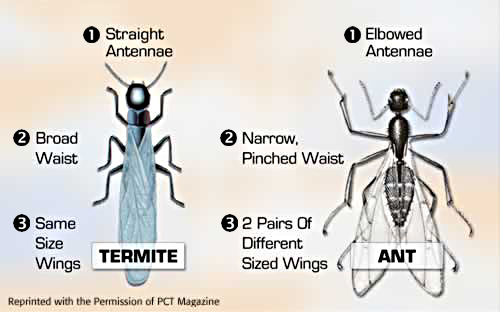The Difference Between Winged Termites and Winged Ants
In honor of Termite Awareness Week, which happens to be this week, we wanted to share the differences between a winged ant vs. a winged termite. According to PCT Magazine, the two can somewhat resemble each other, and since numerous species of termites and ants swarm at the same time of year, they can easily be confused for each other.
Termites belong to the insect order Isoptera (which means equal (iso) wings (ptera)). Their front and hind wings are nearly equal in length and width. Termites hold their wings flat over their body when at rest and shed their wings much more quickly than do ants. Ants belong to the insect order Hymenoptera (membrane (hymen) wings (ptera)). Their membranous front wings are much longer than their hind wings, and their wing veins are darker and typically more prominent than those of termites. Ants hold their wings angled above the body when at rest. 
Termite swarmers’ antennae are rather straight or gently curved and are composed of round, bead-like segments. In comparison, ant swarmers have elbowed antennae, with a long first segment nearest the head.
Insects have three interconnecting body regions: head, thorax and abdomen. In termite swarmers, the thorax and abdomen are broadly joined. In contrast, ant swarmers appear to have a constricted (pinched in) “waist” because of the narrow junction between their thorax and abdomen.
Termite swarmers are soft bodied whereas ant swarmers are hard bodied. This means that if you were to place the swarmers you’re seeing in a closed jar containing a wad of paper towel, by the next day the termite alate will have died and their bodies will be shrunken due to water loss, whereas ant alates typically will be alive with no evidence of desiccation.